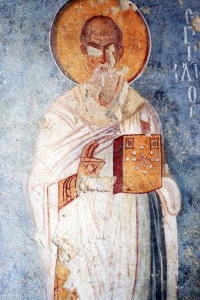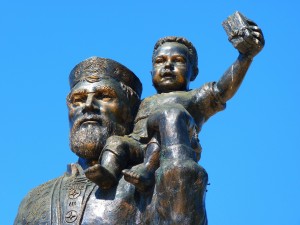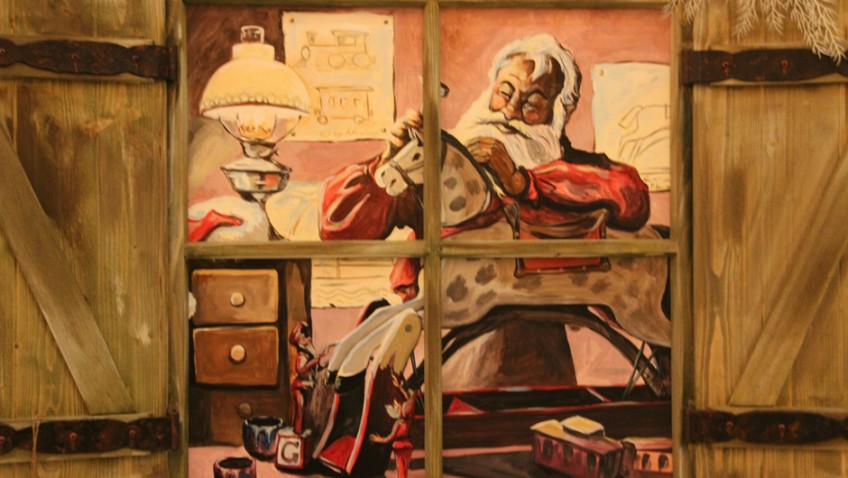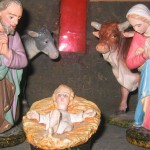December 6 marks Saint Nicholas Day, and to mark the beginning of the Christmas season it is worth investigating the man who has given us so many traditions
The Feast Day is celebrated in many European countries, as well as areas across the world that boast a strong European influence.
Nikolaos of Myra, was a historic 4th-century Christian saint and Greek Bishop of Myra, in Asia Minor. Because of the many miracles attributed to his intercession, he is also known as Nikolaos the Wonderworker.
 Born in Patara, a land that is part of present-day Turkey, circa 280, St. Nicholas was a Christian bishop who helped the needy. After his death, the legend of his gift-giving grew. St. Nicholas transformed into the legendary character called Santa Claus, who brings Christmas presents to children around the world.
Born in Patara, a land that is part of present-day Turkey, circa 280, St. Nicholas was a Christian bishop who helped the needy. After his death, the legend of his gift-giving grew. St. Nicholas transformed into the legendary character called Santa Claus, who brings Christmas presents to children around the world.
There are many legends about St. Nicholas of Myra. One story tells how he helped three poor sisters. Their father did not have enough money to pay their dowries and thought of selling them into servitude. Three times, St. Nicholas secretly went to their house at night and put a bag of money inside. The man used the money so that one of his daughters could marry. On the third visit, the man saw St. Nicholas and thanked him for his kindness. He also reportedly saved three men who were falsely imprisoned and sentenced to death.
Several sources state St. Nicholas is believed to have died on 6th December, 343. Over the years, stories of his miracles and work for the poor spread to other parts of the world. He became known as the protector of children and sailors and was associated with gift-giving. He was a popular saint in Europe until the time of the Reformation in the 1500s, a religious movement that led to the creation of Protestantism, which turned away from the practice of honoring saints. St. Nicholas, however, remained an important figure in Holland.
The Dutch continued to celebrate the feast day of St. Nicholas, December 6. It was a common practice for children to put out their shoes the night before. In the morning, they would discover the gifts that St. Nicholas had left there for them. This is still a big day in Holland. Dutch immigrants brought St. Nicholas, known to them as Sint Nikolaas or by his nickname Sinter Klaas, and his gift-giving ways to America in the 1700s.
In America, St. Nicholas went through many transformations and eventually Sinter Klaas became Santa Claus. Instead of giving gifts on December 6, he became a part of the Christmas holiday. In the 1820 poem “An Account of a Visit from St. Nicholas” by Clement Clarke Moore, he is described as a jolly, heavy man who comes down the chimney to leave presents for deserving children and drives a sleigh pulled by flying reindeer.
History
Even by the reign of Justinian (d. 565), Nicholas was famous, and the emperor dedicated a church in Constantinople to him. By the 900s, a Greek wrote, “The West as well as the East acclaims and glorifies him. Wherever there are people, his name is revered and churches are built in his honour. All Christians reverence his memory and call upon his protection.” The West became even more interested when his “relics” were taken from Myra to Bari, Italy, on May 9, 1087. He’s said to have been represented by medieval artists more frequently than any saint but Mary, and nearly 400 churches were dedicated in his honour in England alone during the late Middle Ages.
Saint Nicholas is also the patron Saint of Sailors, Pawnbrokers and Prostitutes. Although he’s one of the most popular saints in the Greek and Latin churches, his existence isn’t attested by any historical document.
Like most of the origins of Christmas traditions the story of Saint Nicholas has evolved and been adapted by different cultures but who cares if we are left with the image of a kindly generous figure who represents the art of giving.




